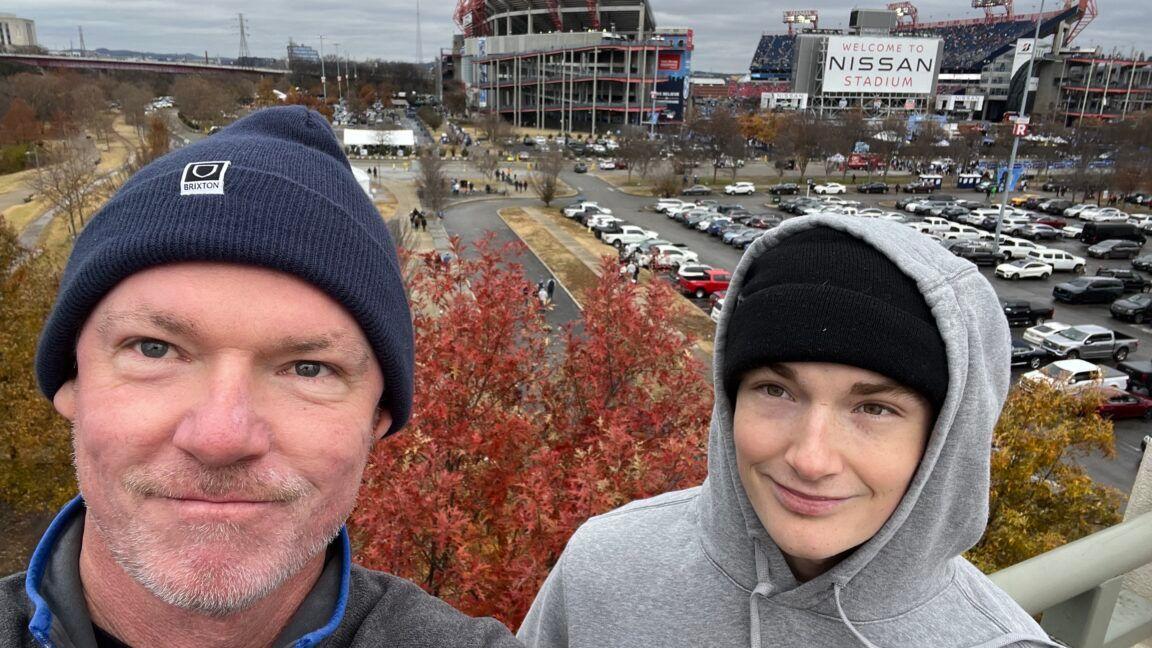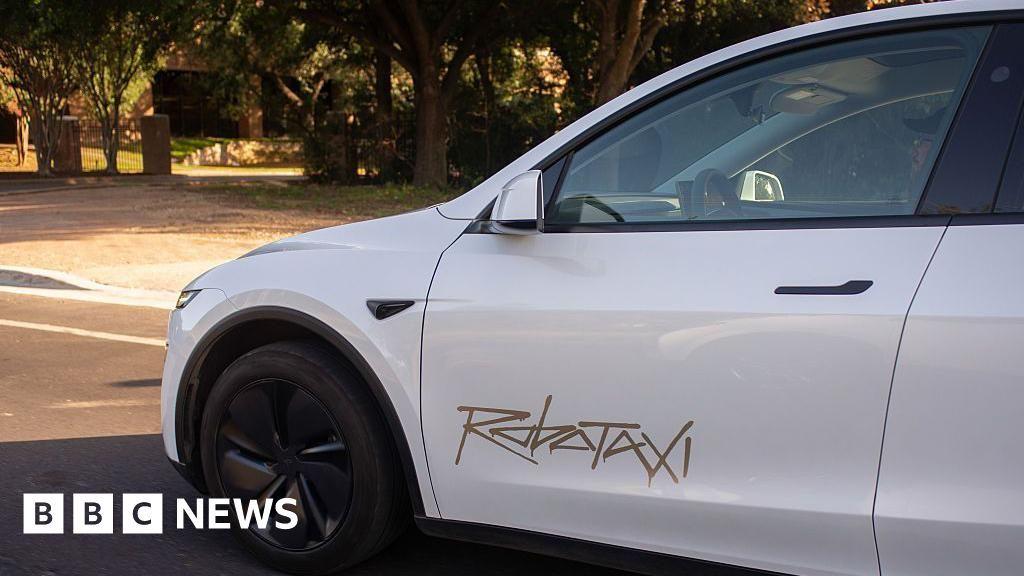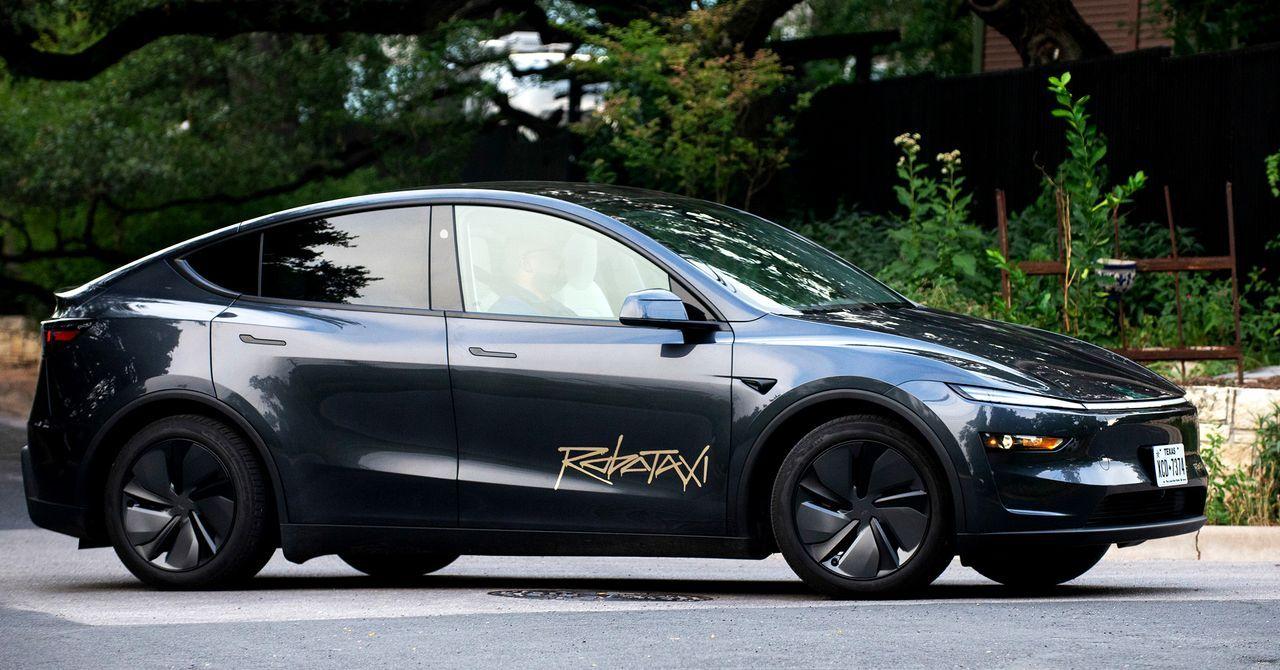Tesla's Autopilot Fails YouTuber's Visual Spoofing Test, Sparking Debate on AI-Driven Car Safety
2 Sources
2 Sources
[1]
Tesla Autopilot Car Drove Into a Giant Photo of a Road
Famous YouTube creator and former NASA engineer Mark Rober, who provides his 65 million subscribers with scientific entertainment videos, put Tesla's vision-based safety features up against a LiDAR system, and the results, although arguably flawed, highlight the limitations of vision-based autonomous vehicle systems. Before getting into Rober's video, what it shows, and what it doesn't, it's important to contextualize the different autonomous vehicle technologies discussed. First of all, there are six levels of vehicle autonomy, ranging from level zero (no automation whatsoever) to level five (complete driving automation in all conditions at all times with zero driver attention or interaction required). Each jump from one level to the next requires significant technological advancement, and right now, Tesla's current commercially available cars are classified as level two, meaning that they offer partial vehicle automation. Tesla vehicles can control steering and acceleration (and deceleration) autonomously, although there must always be an alert driver in the driver's seat. All Tesla vehicles built for the North American market feature multiple external cameras and vision processing to perform its various functions, including Autopilot (traffic-aware cruise control and automatic steering) and supervised self-driving (navigation, automatic lane changes, automatic parking, summoning, traffic and stop sign control). All autonomous vehicles -- and none available to the public are level five yet, by the way -- require some camera system to see the world around them and processing to turn that visual data into safe action. While some autonomous vehicle makers celebrate LiDAR (light detection and ranging) technology for its superior three-dimensional mapping performance in challenging situations, Tesla claims vision-based systems with traditional optical cameras are better overall because they can better determine precisely what objects exist near the vehicle and improve over time using artificial intelligence. Plus, vision-based camera systems are cheaper, which car makers always like. In Mark Rober's new video, he pits a Tesla against a LiDAR-equipped vehicle. As Forbes notes, Rober uses an older version of Tesla's "Autopilot" system in his testing, which, despite Tesla calling it "supervised full self-driving," is not an entirely self-driving vehicle system. Again, Tesla is at level two. In any event, Rober attempted to see if a photo wall of an open road could fool Tesla's vision-based system. Would the Tesla believe the wall was real and drive straight through it, Wile E. Coyote style? Yes. But before getting to that, Rober demonstrated how LiDAR cameras work by secretly bringing a LiDAR camera onto Disney's famous and notoriously secretive Space Mountain ride. The ride occurs in near-pitch darkness, and riders don't know what is happening around them. LiDAR fixes that since it images the world around it by emitting laser pulses and measuring how long it takes for the reflected light to return to the camera. While this offers no insight at all about what the LiDAR camera "sees," it can provide a detailed 3D map in complete and total darkness, which is precisely why some autonomous car companies believe it is essential to include on their cars. While Tesla has openly criticized LiDAR camera systems because they are "dumb" and unable to identify objects, LiDAR can detect an object in the road even if that object looks like more road, which is why an autonomous car equipped with Luminar's LiDAR camera technology (https://www.luminartech.com/) did not get fooled by an ACME-inspired photo wall and the Tesla did. LiDAR is also able to handle situations that a vision-based camera alone struggles with, such as extreme fog. There is no way to know if Tesla's most recent system would have performed better. Still, critics of pure vision-based autonomous vehicle systems have routinely noted that the system is vulnerable to visual spoofing and major performance defects in adverse conditions. It also brings into question how a solely vision-based system would ever entirely overcome the risk of visual spoofing. While it's not apparent that the risk of visual spoofing is a real one -- who is putting up photo walls on roads? -- Rober's testing raises interesting questions concerning how to safely make a fully autonomous vehicle and whether such a vehicle would require a combination of different imaging technologies, including vision, LiDAR, and even radar. While the threat of running into a photo wall may be low, driving in unpredictable and often challenging, complicated scenarios is not, and level four and five autonomous cars will need to be equipped with some seriously safe and sophisticated camera technology to handle everything the real world has to throw at them.
[2]
YouTuber Crashes Tesla Into Fake Road Wall, Fooling Vehicle Cameras In Misleading Video - Tesla (NASDAQ:TSLA)
Former NASA engineer and YouTuber Mark Rober pitted Tesla Inc's TSLA Autopilot system against a lidar system from Luminar Technologies Inc LAZR in his latest video. Although the road conditions were terrible, the results were clear, but there's a catch. What To Know: Rober is one of the most successful creators on YouTube with over 65 million subscribers. His latest video "Can You Fool A Self Driving Car?" compares the capabilities of Luminar's lidar technology with Tesla's driver-assistance technology. According to Forbes, Rober is already receiving backlash because the video is misleading. Although the YouTuber claims to be testing self-driving technology, he actually tested Tesla's driver-assistance technology in the video, which hasn't been updated in years. Lidar, which stands for light detection and ranging, uses lasers to determine distance. Tesla famously operates its systems with just cameras. Tesla CEO Elon Musk has publicly said that cameras and AI are all that's needed for safe self-driving technology. The problem with Rober's video is that he didn't test Tesla's latest Full Self-Driving system, or even any self-driving system at all. He tested Tesla's Autopilot system, which is an older driver-assist tool for highways, similar to some cruise control systems. Check This Out: EXCLUSIVE: Trump's Tesla Purchase Unlikely To Boost Sales As 53% Say 'Never' Despite the video being misleading, the results were clear, as to be expected given the difference in capabilities of the two systems. The video was designed to show the difference between what a computer sees and what lidar detects on the road in varying conditions. Luminar's lidar technology passed all of the tests, while Tesla's Autopilot system failed to detect objects in heavy fog and in a simulated downpour. Tesla's Autopilot also failed the "Wile E Coyote" wall test. For the final test, Rober constructed a wall out of styrofoam and printed a photograph of the empty road ahead on the front, creating the illusion that the wall wasn't there. While the Luminar-equipped vehicle stopped before getting to the wall, the Tesla vehicle blew right through it "So I can definitely say for the first time in the history of the world, Tesla's optical camera system would absolutely smash through a fake wall without even a slight tap on the brakes," Rober said. The video already has nearly 11 million views and Luminar shares were up more than 24% in Monday's session at last check, according to Benzinga Pro. Read Next: Legendary Trader Says Tesla, Nvidia, Apple Shares Are Ready To Rally: 'I See What I Like To See' This illustration was generated using artificial intelligence via Midjourney. TSLATesla Inc$239.59-4.16%Stock Score Locked: Want to See it? Benzinga Rankings give you vital metrics on any stock - anytime. Reveal Full ScoreEdge RankingsMomentum90.42Growth55.16Quality97.61Value12.26Price TrendShortMediumLongOverviewLAZRLuminar Technologies Inc$6.3024.8%Market News and Data brought to you by Benzinga APIs
Share
Share
Copy Link
Popular YouTuber Mark Rober's video comparing Tesla's vision-based Autopilot system with LiDAR technology raises questions about the safety and limitations of AI-driven autonomous vehicles.

YouTuber Puts Tesla's Autopilot to the Test
In a viral video that has garnered nearly 11 million views, popular YouTuber and former NASA engineer Mark Rober has ignited a debate on the safety and limitations of AI-driven autonomous vehicles. Rober, known for his scientific entertainment content, pitted Tesla's vision-based Autopilot system against LiDAR technology in a series of tests designed to challenge the capabilities of self-driving car systems
1
.The Controversial "Wile E. Coyote" Test
The most striking experiment in Rober's video involved a life-sized photograph of an open road printed on a styrofoam wall. While a vehicle equipped with Luminar's LiDAR technology successfully detected and stopped before the obstacle, Tesla's Autopilot system failed to recognize the deception, causing the car to drive straight through the fake wall
2
.Limitations of Vision-Based Systems
Rober's tests highlighted potential weaknesses in purely vision-based autonomous systems. The Tesla vehicle also struggled in simulated adverse weather conditions, such as heavy fog and downpours, where the LiDAR-equipped car performed better
1
. These results have raised questions about the ability of vision-only systems to handle complex real-world scenarios and their vulnerability to visual spoofing.Controversy and Criticism
Despite the video's popularity, it has faced criticism for potentially misleading viewers. Forbes noted that Rober used an older version of Tesla's Autopilot system, which is classified as a Level 2 driver-assistance technology, rather than a fully autonomous system
2
. This distinction is crucial, as Tesla's current commercially available vehicles are not designed for complete self-driving capabilities.The LiDAR vs. Vision Debate
The experiment has reignited the debate between proponents of LiDAR and vision-based systems for autonomous vehicles. While companies like Luminar champion LiDAR for its superior 3D mapping capabilities, Tesla has consistently argued that vision-based systems using traditional optical cameras are more cost-effective and can improve over time through AI learning
1
.Related Stories
Implications for the Future of Autonomous Vehicles
Rober's video raises important questions about the development of truly safe and reliable autonomous vehicles. As the industry progresses towards higher levels of autonomy, it becomes increasingly clear that a combination of different imaging technologies, including vision, LiDAR, and radar, may be necessary to handle the unpredictable nature of real-world driving conditions
1
.Market Response
The video's impact extended beyond the realm of technology discussions, influencing market perceptions as well. Following the release of Rober's experiment, shares of Luminar Technologies Inc. saw a significant boost, rising more than 24% in a single trading session
2
.References
Summarized by
Navi
Related Stories
Weekly Highlights
1
Google TPUs Challenge Nvidia's AI Chip Dominance as Meta Explores Billion-Dollar Switch
Business and Economy

2
OpenAI and Jony Ive Reveal First Hardware Prototype for Screenless AI Device
Technology

3
OpenAI Faces Legal Battle Over Teen Suicide Cases, Blames Users for Violating Terms of Service
Policy and Regulation








